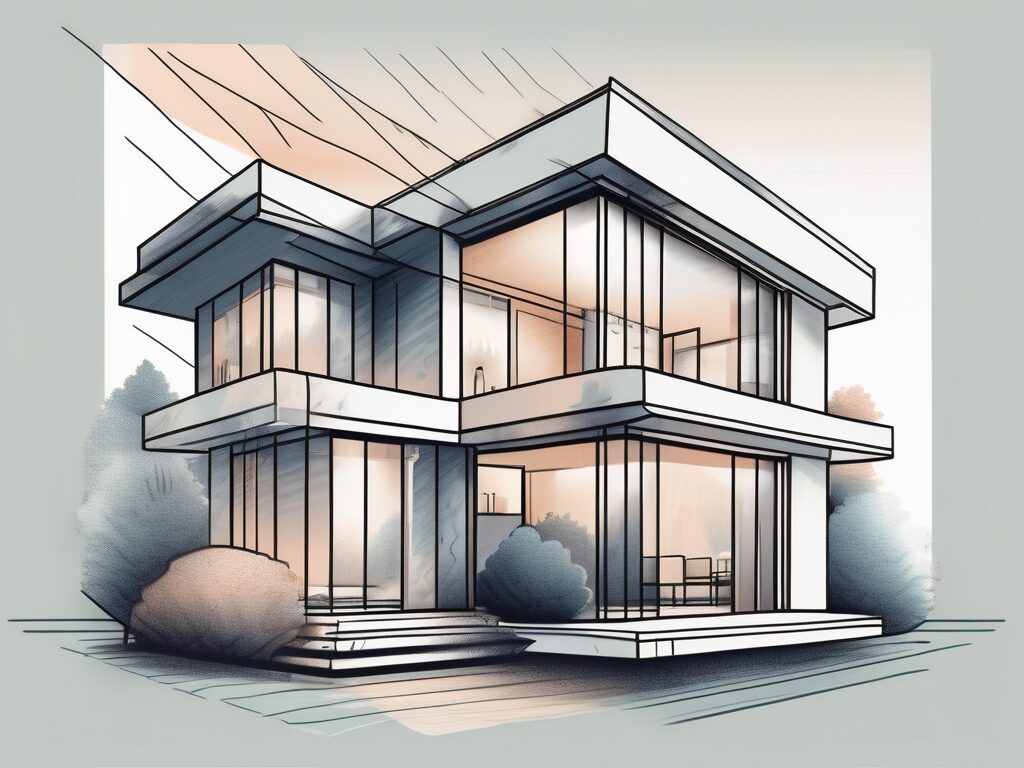
Agent A-Team or Solo Superhero? Finding the Right Real Estate Partner for Your Selling Journey in Wildwood Florida
When it comes to selling your home in Wildwood, Florida,…
January 29, 2024
In recent years, hybrid mortgages have gained popularity among homebuyers looking for flexible and affordable financing options. A hybrid mortgage combines features of both fixed-rate and adjustable-rate mortgages, offering borrowers the best of both worlds. This comprehensive guide aims to demystify the mechanics of hybrid mortgages, explore various loan programs offering hybrid options, weigh the pros and cons, and help you determine if a hybrid mortgage is the right choice for you.
Hybrid mortgages are structured with an initial fixed-rate period followed by an adjustable-rate period. This initial fixed-rate period typically spans anywhere from three to ten years, providing borrowers with a stable monthly payment and predictable budgeting. Understanding the mechanics behind the different aspects of a hybrid mortgage is crucial to grasp its benefits and potential risks.
A hybrid mortgage offers borrowers the best of both worlds, combining the stability of a fixed-rate mortgage with the flexibility of an adjustable-rate mortgage. This unique structure allows borrowers to take advantage of low initial interest rates while also benefiting from potential future rate decreases.
During the initial fixed-rate period, borrowers can enjoy the peace of mind that comes with knowing their mortgage payment will remain the same each month. This stability is particularly beneficial for those on a tight budget or who prefer to plan their finances with certainty.
During the initial fixed-rate period of a hybrid mortgage, borrowers enjoy an introductory, usually lower, interest rate known as the teaser rate. This teaser rate is designed to entice borrowers into the mortgage and provide them with initial cost savings. It is important to note, however, that after the fixed-rate period expires, the interest rate will adjust according to market conditions.
The teaser rate can vary depending on market conditions and the specific terms of the mortgage. Borrowers should carefully consider the duration of the teaser rate and how it aligns with their long-term financial goals. While the lower initial rate may be appealing, it is essential to evaluate the potential impact of future rate adjustments.
In an adjustable-rate mortgage (ARM) component of a hybrid mortgage, the interest rate is determined by the sum of the margin and an index value. The margin is an additional fixed percentage added to the index rate. Commonly used indices include the London Interbank Offered Rate (LIBOR) and the Constant Maturity Treasury (CMT) rate. Understanding how the margin and index work together will enable borrowers to make informed decisions about their mortgage.
The margin represents the lender’s profit margin and is typically determined based on the borrower’s creditworthiness. A lower credit score may result in a higher margin, while a higher credit score may lead to a lower margin. The index, on the other hand, reflects the general movement of interest rates in the market.
When the fixed-rate period ends, the interest rate on the hybrid mortgage will adjust based on changes in the chosen index. This adjustment can occur annually, biannually, or at other predetermined intervals. It is important for borrowers to closely monitor the chosen index and understand how it may impact their future mortgage payments.
Hybrid mortgages often come with interest rate and payment caps designed to protect borrowers from excessively high rate fluctuations. A cap limits the maximum increase in interest rates during the adjustment periods, safeguarding borrowers from sudden and steep payment increases. It is crucial to carefully review the terms and conditions of these caps to fully understand the potential impact on future mortgage payments.
Interest rate caps can be either periodic or lifetime caps. Periodic caps limit the amount the interest rate can increase during a specific time period, such as annually or biannually. Lifetime caps, on the other hand, restrict the maximum increase over the entire life of the loan.
Payment caps, on the other hand, limit the amount by which the monthly mortgage payment can increase. This protection ensures that borrowers are not faced with unaffordable payment increases, even if the interest rate rises significantly.
Understanding the caps associated with a hybrid mortgage is essential for borrowers to assess their ability to handle potential rate adjustments. By carefully evaluating the caps, borrowers can make informed decisions about their financial future and ensure that their mortgage remains affordable throughout the life of the loan.
Hybrid mortgages are available in various loan programs, catering to different borrower needs and eligibility criteria. Let’s explore how hybrid mortgages are incorporated into conventional loans, VA loans, and FHA loans.
Conventional loans, backed by private lenders and not insured or guaranteed by the government, offer hybrid mortgage options. These loans typically require higher credit scores and down payment percentages. Borrowers who intend to stay in their homes for a few years but desire the security of a fixed rate initially may find hybrid mortgages within conventional loans appealing.
When considering a hybrid mortgage within a conventional loan, it’s important to understand the different options available. One popular option is the 5/1 ARM, which offers a fixed interest rate for the first five years of the loan term, followed by adjustable rates for the remaining years. This can be advantageous for borrowers who anticipate a change in their financial situation or plan to sell their property before the adjustable rate kicks in.
Another option within conventional loans is the 7/1 ARM, which provides a fixed interest rate for the first seven years before transitioning to adjustable rates. This longer fixed-rate period can give borrowers more stability and predictability, especially if they plan to stay in their homes for a longer period of time.
It’s important for borrowers considering hybrid mortgages in conventional loans to carefully evaluate their financial goals and future plans. Consulting with a mortgage professional can help borrowers determine the best hybrid mortgage option within the conventional loan program.
For eligible veterans, active-duty military personnel, and their surviving spouses, hybrid mortgages are offered through the Department of Veterans Affairs (VA). VA hybrid loans provide veterans the opportunity to take advantage of low-cost financing options while presenting them with the flexibility of an adjustable-rate component after an initial fixed-rate period. It is important for veterans to explore the VA hybrid mortgage program and assess whether it aligns with their specific housing needs.
VA hybrid mortgages, also known as VA adjustable-rate mortgages (ARMs), offer veterans the chance to secure a low fixed interest rate for a predetermined period, typically five or seven years. After this initial fixed-rate period, the interest rate adjusts annually based on market conditions. This can be beneficial for veterans who anticipate changes in their income or plan to sell their homes before the adjustable rate takes effect.
In addition to the flexibility provided by the adjustable-rate component, VA hybrid mortgages also offer advantages such as no down payment requirements, no private mortgage insurance (PMI), and competitive interest rates. These features make VA hybrid loans an attractive option for veterans looking to purchase or refinance a home.
It’s crucial for veterans to thoroughly understand the terms and conditions of VA hybrid mortgages and assess their long-term financial goals before committing to this type of loan. Consulting with a VA loan specialist can provide veterans with the necessary guidance and information to make informed decisions.
The Federal Housing Administration (FHA) also offers hybrid mortgage options for borrowers seeking federally insured loans. FHA hybrid mortgages, often referred to as 5/1 or 7/1 ARMs, enable borrowers to benefit from the lower initial fixed-rate period while enjoying the backing and flexibility provided by the FHA. First-time homebuyers or those with limited down payment capabilities might find FHA hybrid loans to be a suitable financing option.
When considering an FHA hybrid mortgage, borrowers should familiarize themselves with the specific requirements and benefits of this loan program. FHA loans are known for their lenient credit score requirements and lower down payment options, making them accessible to a wider range of borrowers.
With an FHA hybrid mortgage, borrowers can secure a fixed interest rate for the first five or seven years, depending on the chosen loan term. After this initial fixed-rate period, the interest rate adjusts annually based on market conditions. This structure allows borrowers to take advantage of the stability of a fixed rate while benefiting from potential interest rate decreases in the future.
In addition to the flexible interest rate structure, FHA hybrid mortgages also offer features such as low down payment requirements, lenient debt-to-income ratio limits, and the ability to finance certain home improvements. These advantages make FHA hybrid loans an appealing option for first-time homebuyers or those with limited financial resources.
It’s important for borrowers considering FHA hybrid mortgages to carefully evaluate their financial situation and future plans. Consulting with an FHA loan specialist can provide borrowers with the necessary guidance and information to make informed decisions.
As with any mortgage product, hybrid mortgages have their advantages and disadvantages. Before committing to a hybrid mortgage, it is essential to consider both aspects to make an informed decision.
One of the primary advantages of a hybrid mortgage is the initial fixed-rate period, which offers stability and predictable monthly payments. This can be particularly beneficial for borrowers planning to sell or refinance their homes before the adjustable-rate period begins.
During the fixed-rate period, borrowers can enjoy the peace of mind that comes with knowing their mortgage payments will remain the same each month. This stability allows them to budget effectively and plan for other financial goals. Whether it’s saving for a child’s education or investing in home improvements, having a consistent mortgage payment makes it easier to allocate funds.
Another advantage of a hybrid mortgage is the lower interest rates compared to traditional fixed-rate mortgages during the initial period. This means that borrowers can save on monthly mortgage costs, freeing up more money for other expenses or savings. The lower interest rate can make a significant difference in the overall cost of the mortgage over time.
While hybrid mortgages have their advantages, it is important to be aware of potential drawbacks as well. Once the adjustable-rate period begins, the interest rate may increase, and monthly mortgage payments can fluctuate.
For borrowers who prefer stability and predictability, the fluctuating interest rates during the adjustable-rate period can introduce uncertainty into their budget. It can be challenging to plan for other financial obligations when the mortgage payment amount is not fixed. This unpredictability may cause stress and financial strain for some borrowers.
Additionally, if housing market conditions change dramatically or borrowers are unable to refinance or sell their homes as planned, the transition to the adjustable rate could lead to higher payments. This risk is important to consider, as unforeseen circumstances can impact a borrower’s ability to manage increased mortgage payments.
It is crucial for borrowers to carefully assess their financial situation, long-term goals, and risk tolerance before opting for a hybrid mortgage. Consulting with a mortgage professional can provide valuable insights and help borrowers make an informed decision that aligns with their financial needs and objectives.
Deciding whether a hybrid mortgage is the right choice for you largely depends on your specific needs, financial situation, and long-term plans. It is crucial to consider factors like how long you plan to stay in the property, your risk tolerance, and your ability to withstand potential increases in mortgage payments. Consulting with a trusted mortgage professional can provide valuable insights and guidance tailored to your individual circumstances.
When considering a hybrid mortgage, it’s important to understand how it works. A hybrid mortgage combines features of both fixed-rate and adjustable-rate mortgages. Typically, the initial interest rate is fixed for a certain period, often 3, 5, 7, or 10 years, and then adjusts annually based on market conditions. This initial fixed-rate period can provide stability and predictability in mortgage payments, which can be beneficial for budgeting purposes.
One advantage of a hybrid mortgage is the potential for lower initial interest rates compared to traditional fixed-rate mortgages. This can make it an attractive option for borrowers who want to take advantage of lower rates in the short term. However, it’s important to consider the potential for rate adjustments after the initial fixed-rate period ends. If interest rates rise significantly, your monthly mortgage payments could increase, potentially putting a strain on your budget.
Another factor to consider is how long you plan to stay in the property. If you anticipate selling or refinancing within the initial fixed-rate period, a hybrid mortgage could be a good fit. However, if you plan to stay in the property for the long term, it’s important to carefully evaluate the potential for rate adjustments and how they could impact your financial situation.
Understanding your risk tolerance is also crucial when considering a hybrid mortgage. If you are comfortable with the possibility of rate adjustments and have the financial flexibility to handle potential increases in mortgage payments, a hybrid mortgage may be a suitable option. On the other hand, if you prefer the stability of a fixed-rate mortgage or have a lower risk tolerance, a hybrid mortgage may not align with your preferences.
Consulting with a trusted mortgage professional is highly recommended when evaluating whether a hybrid mortgage is the right choice for you. They can help you assess your financial situation, evaluate different loan programs offering hybrid options, and provide personalized advice based on your unique circumstances. Their expertise and insights can be invaluable in making an informed decision about homeownership financing.
In conclusion, understanding the mechanics and benefits of hybrid mortgages is key to making an informed decision about homeownership financing. By grasping the concepts of teaser rates, margins and indices, and interest rate caps, borrowers can navigate the world of hybrid mortgages with confidence. Exploring the various loan programs offering hybrid options, weighing the pros and cons, and carefully considering personal circumstances will empower homebuyers to determine whether a hybrid mortgage aligns with their financial goals and aspirations.
As you consider the financing options for your home purchase, remember that the right mortgage is just as important as finding the perfect property. Richr is here to support your journey to homeownership with our For Sale By Owner platform, giving you access to the same tools and visibility as traditional selling methods. Take the first step towards making an informed decision with a free home valuation from Richr. Call us on 844-957-4247 to receive your complimentary Comparative Market Analysis (CMA) and discover the true value of your home today.

If you want the Richr team to help you save thousands on your home just book a call.
 Book a call
Book a call